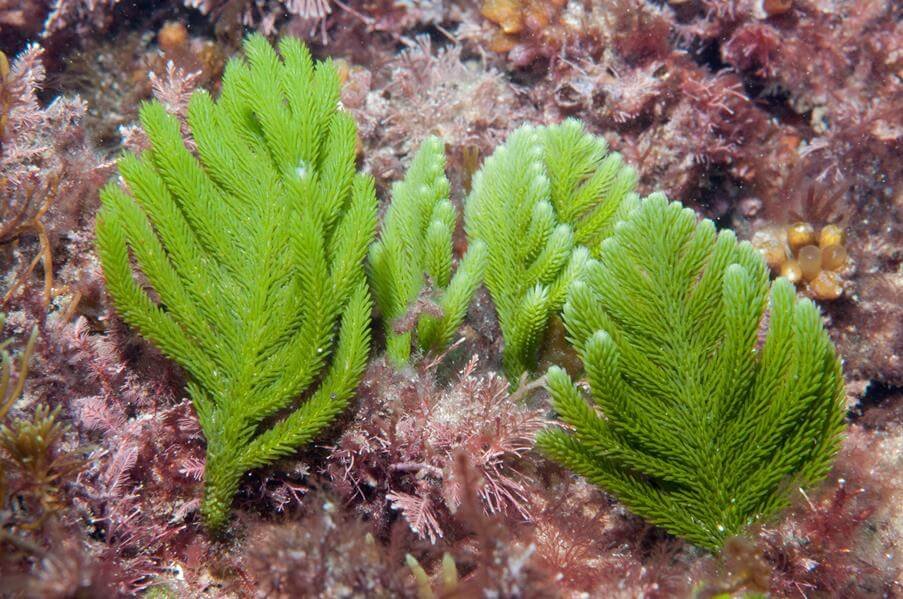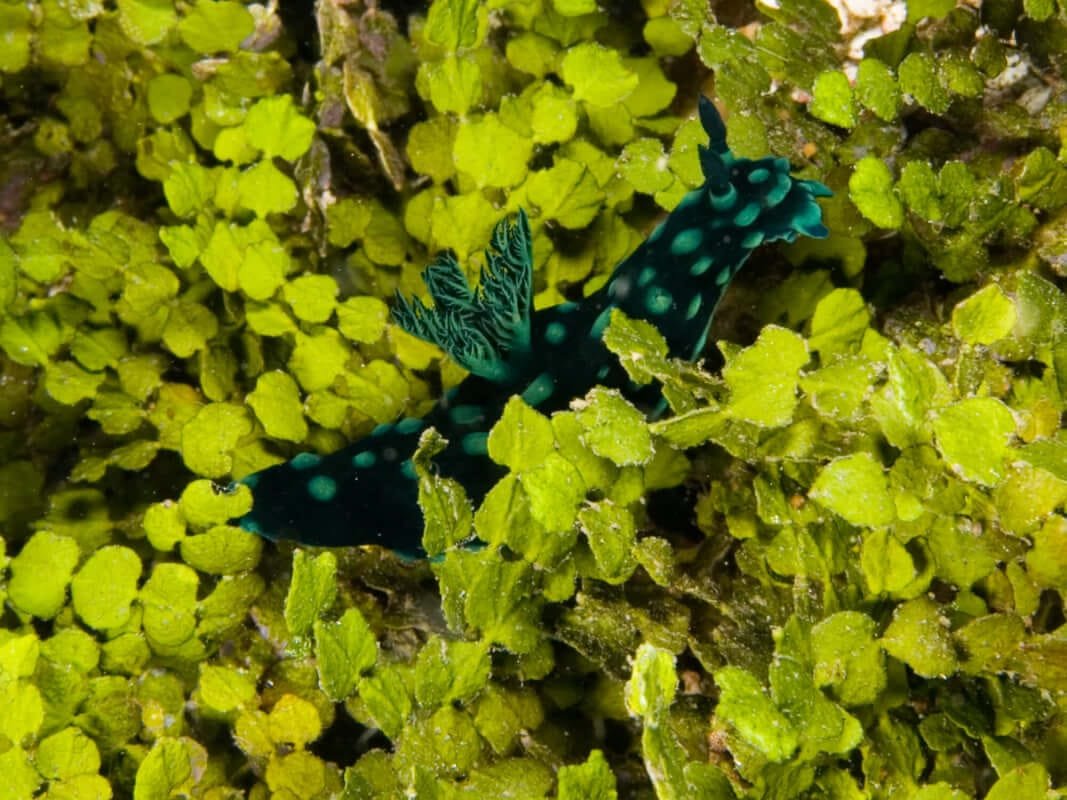Why Add Macroalgae Species to your Reef Tank
Macroalgae, often referred to as “the plants of the sea,” play a significant role in reef tanks. These large, plant-like organisms are not only visually appealing but also serve numerous ecological functions. This blog explores the benefits of incorporating macroalgae into your reef aquarium, highlights some of the best species for reef tanks, and provides essential care tips.
The Role of Macroalgae in Reef Tanks
Macroalgae are an essential component of many reef ecosystems. In a reef tank, they serve several crucial roles:

Nutrient Absorption
One of the primary benefits of macroalgae is their ability to absorb excess nutrients, such as nitrates and phosphates, from the water. This process helps to maintain water quality and reduce the risk of harmful algae blooms, promoting a healthier environment for corals and other tank inhabitants.
Oxygen Production
Through photosynthesis, macroalgae release oxygen into the water, enhancing the overall oxygen levels in the tank. This increase in oxygen is beneficial for all aquatic life, especially in densely populated reef systems.
Related Articles: How Do You Oxygenate A Reef Tank? : Mastering Oxygenation in Your Reef Tank
Habitat and Shelter
Macroalgae provide natural habitat and shelter for various marine organisms, including small fish, invertebrates, and beneficial microorganisms.
They create a more diverse and stable ecosystem within the tank, encouraging natural behaviours and interactions among the inhabitants.
Aesthetic Appeal
With their vibrant colours and diverse forms, macroalgae can significantly enhance the visual appeal of a reef tank. They add texture and contrast, creating a more dynamic and natural-looking aquascape.
Recommended Species of Macroalgae for Reef Tanks
When selecting macroalgae for your reef tank, it’s essential to choose species that are both beneficial and compatible with your tank’s inhabitants. Here are some of the best macroalgae species for reef aquariums:
Chaetomorpha (Chaeto)

Chaetomorpha, commonly known as Chaeto, is one of the most popular macroalgae for reef tanks. It is highly efficient at absorbing nitrates and phosphates, making it an excellent choice for nutrient control. Chaeto is easy to care for, grows quickly, and can be easily pruned to maintain its shape.
Caulerpa

Caulerpa species are fast-growing and come in various shapes and sizes, making them a versatile addition to reef tanks. Some popular varieties include Caulerpa prolifera, Caulerpa racemosa, and Caulerpa serrulata. However, Caulerpa can become invasive if not properly managed, so regular pruning and monitoring are essential.
Halimeda

Halimeda is a calcifying macroalgae known for its segmented, leafy appearance. It adds a unique texture to the tank and can help stabilise calcium levels. Halimeda grows more slowly than other macroalgae and requires good lighting and stable water parameters.
Gracilaria

Gracilaria, also known as Ogo or Tang Heaven, is an excellent choice for reef tanks with herbivorous fish. It is highly nutritious and can serve as a natural food source for tangs and other algae-eating fish. Gracilaria prefers moderate to high lighting and good water flow.
Red Mangrove
(Rhizophora mangle)

Related Article: The Benefits of Mangrove Trees in Reef Tanks
While technically not macroalgae, Red Mangroves are often included in discussions about macroalgae due to their significant nutrient-absorbing capabilities. They are typically grown with their roots submerged and leaves above water, making them a unique and visually striking addition to large reef tanks.
Care Tips for Macroalgae in Reef Tanks
Successfully incorporating macroalgae into your reef tank involves providing the right conditions and regular maintenance. Here are some essential care tips:
Lighting
Macroalgae require adequate lighting to thrive, as they rely on photosynthesis for growth. Most species prefer moderate to high lighting conditions. Ensure your tank’s lighting system is appropriate for the macroalgae species you choose.
Water Flow
Good water circulation is crucial for the health of macroalgae. Ensure that your tank has adequate water flow to prevent detritus buildup and promote nutrient uptake. Position powerheads or pumps to create gentle, even currents throughout the tank.
Related Article: Fast Or Slow? Your Guide To Water Flow!
Nutrient Levels
While macroalgae help control nutrient levels, they also require nutrients to grow. Ensure your tank has a balanced nutrient load by monitoring nitrate and phosphate levels. In tanks with very low nutrient levels, consider supplementing with trace elements to support macroalgae growth.
Pruning
Regular pruning is necessary to prevent macroalgae from becoming overgrown and potentially invasive. Trim back excess growth and remove any decaying parts to maintain the health and appearance of your macroalgae.
Compatibility
Before introducing macroalgae, consider the compatibility with your tank’s inhabitants. Some fish and invertebrates may consume or damage certain macroalgae species. Research the dietary preferences of your tank’s residents and choose macroalgae that are less likely to be targeted.
Conclusion
Macroalgae offer numerous benefits for reef tanks, from nutrient absorption and oxygen production to providing habitat and aesthetic appeal.
By selecting the right species and providing proper care, you can enhance the health and beauty of your reef aquarium. Incorporating macroalgae into your tank not only contributes to a more balanced and stable ecosystem but also creates a more visually captivating underwater world.
Whether you are a seasoned reef keeper or just starting, adding macroalgae to your reef tank can be a rewarding and beneficial endeavour.
Related Articles:
- Embracing the Ocean’s Bounty: Using Natural Seawater in Your Reef Tank
- High Nitrate In Saltwater Aquariums?? Causes and Solutions!
- The Unconventional Approach: Dosing Vodka in Reef Aquariums to Control Nitrates
- What is a Protein Skimmer? Comprehensive Guide…








